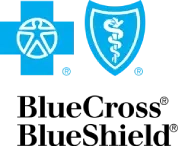
Cocaine Addiction Treatment Center
People using cocaine regularly may not notice it’s highly addictive. This drug releases a high dosage of dopamine and affects the human central nervous system causing euphoria. That’s the reason patients with this substance abuse search for more and more cocaine during this time.
Scroll
Overcoming cocaine addiction demands expert care that heals both body and mind. Effective cocaine addiction treatment combines medical oversight with psychological therapies to create lasting change. Reputable rehab centers develop customized recovery programs addressing each individual’s unique needs and triggers.

What Is Cocaine?
This powerful stimulant originates from the leaves of South American coca plants. When consumed, it triggers rapid chemical changes in the brain that produce:
- Intense but temporary euphoria
- Heightened alertness and energy
- Artificial confidence boosts
- Severe subsequent crashes
Common Forms Available
White Powder Variant
- Typically snorted or injected, this form:
- Provides a 15-30 minute high
- Causes severe nasal damage when snorted
- Carries overdose risks when injected
- Smokable Rock Form (Crack)
Created through chemical processing, this version:
- Delivers a faster, more intense high
- Lasts only 5-10 minutes per use
- Leads to more rapid addiction development
Brain Chemistry Alterations
Cocaine works by flooding neural pathways with dopamine, which:
- Creates immediate pleasure signals
- Disrupts natural reward systems
- Forces the brain to demand increasing amounts
- Leads to compulsive usage patterns
Is Cocaine Addictive?
Scientific research and clinical evidence confirm that cocaine is indeed highly addictive, with one of the strongest potentials for creating dependence among all illicit substances. The drug’s capacity to alter brain chemistry makes it particularly dangerous and challenging to quit without professional intervention.
Cocaine’s Addictive Properties
Cocaine’s addictive power stems from its direct impact on the brain’s reward system. When consumed, it:
- Triggers an immediate and overwhelming release of dopamine
- Disrupts normal neurotransmitter reuptake processes
- Creates artificial neural pathways that prioritize drug-seeking behavior
- Regular cocaine use establishes a predictable pattern of abuse:
- Initial High: Intense but short-lived euphoria (15-30 minutes)
- Comedown: Rapid mood crash as dopamine levels plummet
- Craving Phase: Powerful urges to use again emerge
- Tolerance Development: Requires larger doses for the same effect
What Causes Cocaine Addiction?
Cocaine dependence doesn’t stem from a single source but rather develops through an interplay of multiple influences that differ for each individual. Understanding these contributing elements helps explain why some people develop cocaine addiction while others don’t.
- Biological Predispositions
- Research shows certain people inherit genetic markers that make them more susceptible to substance abuse disorders. Key biological factors include:
- Variations in dopamine receptor genes
- Abnormalities in prefrontal cortex function (the brain’s control center)
- Family history of drug addiction, which increases risk by 40-60%
- Psychological Influences
Many individuals turn to cocaine to cope with untreated mental health conditions in what becomes a dangerous self-medication cycle. Common co-occurring disorders include:
- Depression and anxiety disorders
- Bipolar disorder
- Post-traumatic stress disorder (PTSD)
- Additional risk factors include chronic stress, emotional trauma, and personality traits like impulsivity.
- Environmental Triggers
External circumstances play a pivotal role in cocaine abuse development:
- Early exposure to drugs (especially during teenage years)
- Peer groups that normalize substance use
- High-stress living environments
- Lack of stable support systems
The convergence of these biological vulnerabilities, psychological needs, and environmental pressures creates the perfect conditions for cocaine dependency to take hold. This explains why willpower alone rarely succeeds against addiction.
Signs and Symptoms of Cocaine Addiction
Early detection of cocaine abuse can significantly improve recovery outcomes. Below are the most common manifestations across three categories:
- Observable Physical Symptoms
- Pupillary dilation: Eyes appear abnormally large, even in normal light.
- Nasal damage: Frequent nosebleeds, sinusitis, or a perpetually irritated nasal passage (common with insufflation).
- Rapid weight loss: Reduced caloric intake due to appetite suppression.
- Hyperactivity followed by crash: Sudden bursts of speech/movement, then prolonged fatigue.
- Cutaneous marks: Burns (from crack pipes) or puncture wounds (from needle use).
- Decline in grooming: Disheveled appearance, neglecting basic hygiene.
- Shifts in Behavior & Social Patterns
Social withdrawal: Avoiding family gatherings or longtime friends in favor of new, drug-associated peers.
- Financial distress: Unexplained debts, selling possessions, or theft to fund usage.
- Deceptive actions: Hiding drug paraphernalia, lying about time spent using.
- Apathy toward interests: Abandoning sports, arts, or other prior passions.
- Performance decline: Missed deadlines, absenteeism, or academic failure.
- Risk-taking: Impaired decision-making (e.g., sharing needles, unprotected sex).
- Cognitive & Emotional Red Flags
- Volatile moods: Swinging from exaggerated euphoria to aggression or despair.
- Psychomotor agitation: Restlessness, panic attacks, or irrational suspicions.
- Delusions of grandeur: Overestimating abilities during intoxication.
- Psychotic episodes: Tactile/auditory hallucinations in chronic users.
- Neurocognitive deficits: Memory lapses, inability to concentrate.
When Do You Need Cocaine Addiction Treatment?
Determining when casual use escalates into a condition requiring clinical intervention isn’t always straightforward, but several unmistakable signs indicate the need for professional treatment. These red flags become apparent in behavioral patterns and physical responses:
- Failed Attempts to Quit – Repeated unsuccessful efforts to cut back or stop using, despite conscious desire to do so
- Life Revolving Around Use – Daily activities increasingly center on obtaining, consuming, or recovering from cocaine
- Neglected Responsibilities – Declining performance at work/school or failure to meet family obligations due to drug use
- Damaged Relationships – Strained personal connections caused by behavioral changes related to substance abuse
- Continued Use Despite Harm – Persistent consumption while experiencing deteriorating physical/mental health or social consequences
- Withdrawal Symptoms – Experiencing fatigue, depression, irritability, or intense cravings during periods of abstinence
If these signs are present, it’s time to seek professional cocaine addiction help.
Cocaine Treatment Options
No single treatment is right for everyone. A premier cocaine addiction treatment center will offer a range of evidence-based cocaine treatment options that can be tailored into a personalized recovery plan.
Medical Detoxification
The initial phase of cocaine recovery involves medically monitored detoxification, a process that allows the body to eliminate all traces of the drug while managing withdrawal effects. Unlike some substances, cocaine withdrawal primarily manifests as psychological symptoms rather than physical ones, though these can be profoundly challenging to endure without professional support.
Under medical supervision, patients receive continuous monitoring for potentially severe symptoms, including:
- Overwhelming drug cravings
- Emotional disturbances like depression and anxiety
- Cognitive symptoms, including paranoia
- Extreme exhaustion
- In rare cases, suicidal ideation
Levels of Care: Inpatient and Outpatient Rehab
After detox, the core therapeutic work begins within a structured program.
- Inpatient/Residential Rehab: An inpatient cocaine rehab provides the highest level of care. In this setting, clients live at the treatment facility (typically for 30, 60, or 90 days) and receive 24/7 support. This immersive environment is ideal for those with severe addiction or an unstable home life, as it removes external triggers and allows for total focus on healing.
- Outpatient Rehab: Outpatient programs offer more flexibility, allowing clients to live at home while attending scheduled treatment sessions. This form of cocaine abuse treatment is suitable for those with milder addictions and a strong, stable support system.
Therapeutic Approaches and Counseling
The most effective cocaine rehab programs recognize that lasting recovery requires addressing the emotional and behavioral roots of addiction. Research shows these therapeutic approaches deliver significant results:
- Talking Therapies: Cognitive Behavioral Therapy (CBT) helps individuals recognize and modify the automatic thoughts and belief systems that contribute to substance use. Through structured sessions, patients learn to identify high-risk situations, develop coping strategies, and implement behavioral changes that support sobriety. This approach can be delivered through individual counseling or group therapy formats.
- Incentive-Based Therapy (Contingency Management): Contingency Management utilizes behavioral reinforcement principles by providing tangible rewards for meeting treatment goals, such as maintaining abstinence. This evidence-based approach, often used in cocaine rehab programs, reinforces positive behaviors through tangible rewards. Particularly effective for stimulant disorders, it helps rewire the brain’s reward system during early cocaine addiction recovery.
- Couples and Family Therapy: Family systems therapy recognizes that addiction affects entire relational networks. Specialized sessions help repair communication breakdowns, rebuild trust, and educate family members about the neurobiological aspects of addiction. For couples, targeted interventions focus on developing healthy relationship dynamics that support recovery rather than enabling substance use. These approaches collectively create an environment conducive to sustained rehabilitation.
Medication-Assisted Treatment (MAT)
While no FDA-approved medications exist to directly treat cocaine dependence like those for opioid addiction, certain drugs can support recovery when used alongside behavioral therapies. Doctors may prescribe short-term medications to address specific withdrawal symptoms such as anxiety, insomnia, or depression that often occur during early sobriety.
For individuals with co-occurring addictions, treatment plans may include medications targeting other substance dependencies. For example, those also struggling with alcohol use might receive disulfiram to help maintain abstinence. Comprehensive programs always evaluate and address multiple substance use disorders simultaneously.
Peer Support and Mutual Aid Groups
Maintaining sobriety from cocaine dependence often hinges on the power of peer-supported networks. Programs such as Narcotics Anonymous utilize a structured twelve-step methodology, fostering accountability through regular group sessions and mentorship from experienced sponsors.
Conversely, individuals seeking a secular approach may benefit from scientifically backed alternatives like SMART Recovery, which emphasizes cognitive-behavioral strategies to counteract urges and develop practical resilience techniques. While their frameworks differ, one rooted in spiritual principles, the other in psychological tools, both systems create vital connections among individuals sharing comparable struggles, reinforcing commitment to a drug-free life.
How Long Is Cocaine Addiction Treatment?
The length of cocaine addiction treatment differs significantly based on each person’s unique circumstances. Effective recovery cannot be rushed, as sustainable healing requires time and commitment. According to studies conducted by the National Institute on Drug Abuse, treatment programs lasting fewer than three months typically yield suboptimal results, demonstrating the importance of extended therapeutic interventions for meaningful behavioral change.
Practical Steps for Supporting a Loved One
Supporting someone through cocaine addiction requires a thoughtful, informed approach.
- Start by educating yourself about substance use disorders and understanding how addiction alters brain chemistry, which helps you respond with empathy rather than frustration. Research shows that approaching the situation with compassion significantly increases the chances of successful intervention.
- When you’re ready to talk, pick a quiet time when your loved one is sober and you’re both calm. Use neutral observations rather than accusations, like “I’ve noticed you’ve been having trouble sleeping lately” instead of “You’re using again.” This makes the conversation feel like concern rather than confrontation.
- It’s equally important to stop any behaviors that might enable the addiction. This includes refusing to cover up mistakes, loan money, or make excuses for their actions. Be clear that while you won’t support the addiction, you’ll fully support recovery efforts. Say something like, “I can’t help you get high, but I’ll drive you to any counseling appointment.”
- Have treatment options ready before the conversation. Look up local addiction specialists, treatment centers, and support groups. If they refuse help, consider contacting a professional interventionist who can guide a structured meeting with other concerned family and friends. These specialists know how to present treatment as the caring choice rather than a punishment.












